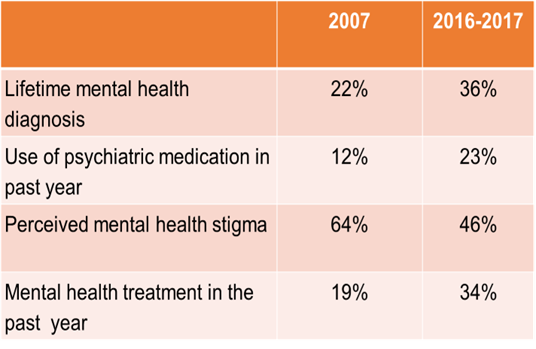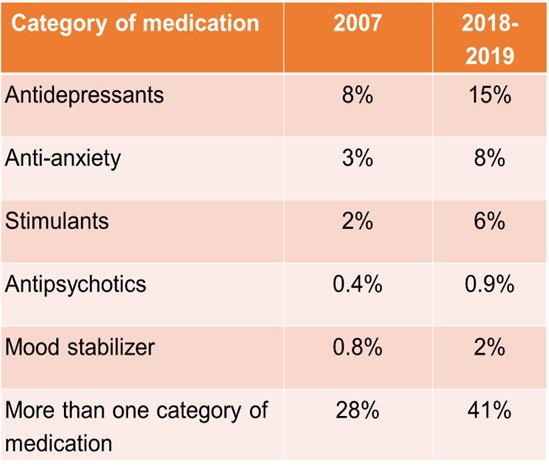Heading off to College: How to THRIVE (Not Just Survive) on College Campuses
The U.S. Surgeon General Advisory on the Youth Mental Health Crisis, released Dec. 7, 2021, shed light on the concerning trend of worsening mental health among children, adolescents, and young adults in the context of the COVID-19 pandemic.1 Indeed, college and university students are experiencing greater frequency and intensity of mental health symptoms than ever before. Students with longstanding histories of mental illness are increasingly able to attend college as a result of effective ongoing treatment from child and adolescent psychiatrists and other mental health professionals.
A range of social stressors combine to form a constellation unique to college and university students. College students are faced with shaping their individual identities during a time of great socio-political upheaval while simultaneously trying to meet rigorous academic expectations. Students are also often navigating the challenges of greater independence and establishing new friendships and social networks along with athletic or job commitments.
Use of mental health services is increasing among college students according to the Healthy Minds Study, a large annual survey of college students.2 Student reports of ever having been diagnosed with a mental illness increased from 22% in 2007 to 36% in 2016-2017; mental health treatment in the past year increased from 19% to 34%; and use of psychiatric medication in the past year increased from 12% to 23%. At the same time, student reports of perceived mental health stigma decreased from 64% to 46%.
According same study, student use of psychiatric medication has also increased.3 The study found increases in the use of several categories of medication between 2007 and 2018-2019. Among college students, use of antidepressants increased from 8% to 15%; anti-anxiety medications, 3% to 8%; stimulants, 2% to 6%; antipsychotics, .4% to .9%; mood stabilizers, .8% to 2%. In addition, use of more than one category of medication increased from 28% to 41%.


What can university students do to promote their own mental wellness on a college campus?
- Familiarize yourself with mental health and wellness services offered on campus. Do they provide long-term or short-term services? Reach out for support.
- Check that your health insurance that will cover medical and mental healthcare in the area in which you are attending college. Fear of a hefty medical bill could prevent someone experiencing a psychiatric or medical emergency from visiting the emergency department.
- Look for ways to connect with others on campus. The COVID-19 pandemic made us realize how significant the impact of isolation can be on one's mental health. Join a campus organization.
- Communicate with your instructors about your needs.
- Prioritize sleep and a healthy diet. You may be tempted to skip meals or sleep to study, but doing so will only worsen your concentration, retention, and frustration tolerance.
More information on college student mental health:
References
- US Surgeon General Issues Advisory on Youth Mental Health Crisis. HHS.gov. 2021.
- Lipson S, Lattie EG, Eisenberg D. Increased rates of mental health service utilization by U.S. college students: 10-year population-level trends (2007-2017). ;Psychiatric Services. 2019 Jan 1; 70(1):60-3
- Morris MR et al. Use of psychiatric medication by college students: A decade of data. Pharmacotherapy: The Journal of Human Pharmacology and Drug Therapy. 2021;41(4):350-8.
